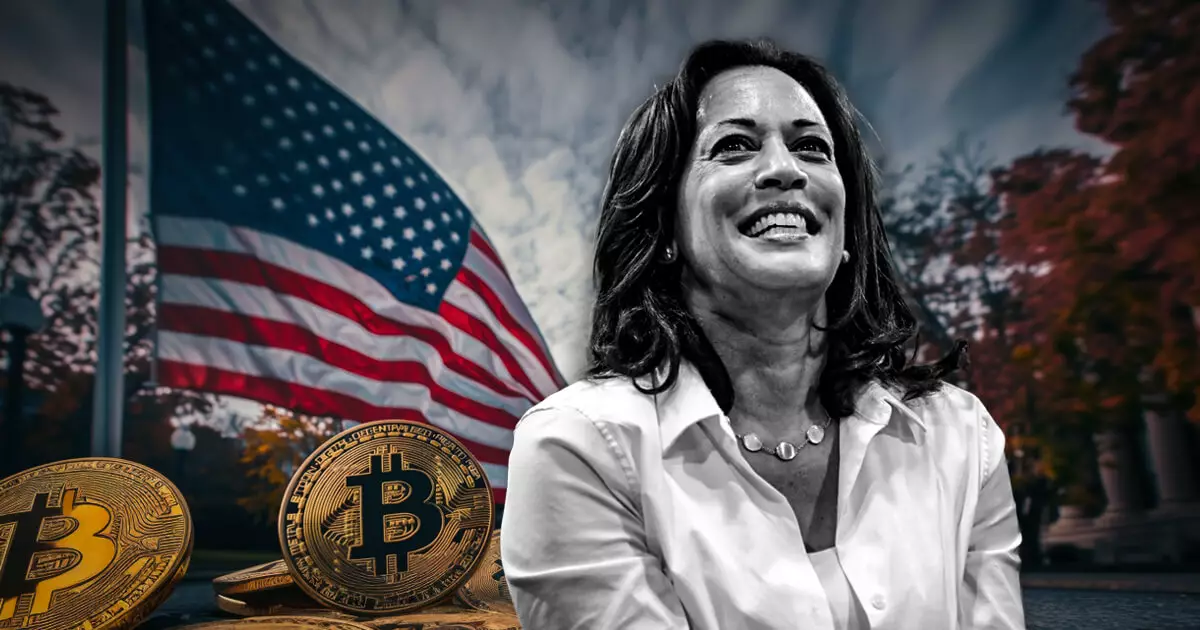The cryptocurrency industry has gained substantial traction in recent years, drawing the attention of policymakers, investors, and the general public alike. As the upcoming U.S. presidential election approaches, the stances taken by candidates on digital assets have important implications for the future of this burgeoning market. Recent insights from Alex Thorn, the head of research at Galaxy Digital, provide an analytical framework for evaluating the potential impacts of Vice President Kamala Harris and former President Donald Trump on the cryptocurrency ecosystem.
Thorn’s analysis, dubbed a “policy scorecard,” indicates that Kamala Harris’s election would likely have a limited negative impact on the crypto industry compared to the current administration. However, it is Donald Trump’s approach that emerges as the most favorable for crypto enthusiasts. The research suggests that the electoral decisions could either enhance or undermine the climate for cryptocurrencies depending on the candidates’ respective policies.
Harris has embraced a more cautious approach, particularly regarding taxation and regulations, which raises concerns among industry stakeholders. On the other hand, Trump’s prior tenure as president was marked by a more open stance toward the crypto sector, fostering optimism among proponents of decentralized finance. The distinctions in their policy orientations reveal much about how each candidate could shape the future of digital assets in the U.S.
The differences between Harris and Trump become particularly evident across four critical issues: tax policies, Bitcoin mining regulations, self-custody rights, and banking access. In terms of taxation, Harris’s campaign has been characterized as “extremely hostile” due to her intent to reverse the tax cuts instituted by Trump for high-income earners. This could inadvertently create a challenging environment for investors and startups in the crypto sphere who may be subjected to heavier tax burdens.
When considering Bitcoin mining, the policies of the two candidates diverge significantly. While President Biden proposed a hefty 30% tax on mining operations, Harris has adopted a more lenient rhetoric, yet still remains less favorable than Trump, who openly expresses support for the mining sector. Trump’s meetings with miners and favorable comments about mining being a facet of “domestic manufacturing” solidify his stance as pro-crypto. This difference delineates the shape that mining operations could take under each candidate.
Furthermore, their approaches to banking regulations also highlight stark contrasts. Kamala Harris may potentially soften the restrictive measures of Biden’s “Operation Chokepoint 2.0,” which hampers banking access for crypto firms. Trump’s more aggressive commitment to dismantling such regulations and his aversion to central bank digital currencies (CBDC) present a more conducive framework for the cryptocurrency industry.
While the policies regarding self-custody rights appear to align somewhat between Harris and Trump, the lack of clarity from Harris’s campaign contrasts sharply with Trump’s assertion during the Bitcoin Conference to protect self-custody rights. This could create an uncertain dynamic for investors looking to manage and secure their own assets.
The scorecard reveals that Bitcoin itself may not face substantial regulatory challenges, irrespective of the election outcome. However, the outlook for altcoins is less certain. Trump’s victory could signal much-needed regulatory clarity that would benefit alternative cryptocurrencies, allowing them to possibly outperform Bitcoin. Conversely, a Harris administration could impose constraints that disadvantage altcoins, making the stakes even higher for industry stakeholders.
As the election draws nearer, the choices American voters make could steer the future of the cryptocurrency industry dramatically. While a Trump presidency holds immense potential for explosive growth within the crypto sector, a Harris administration may provision some relief compared to the current leadership but still carry limitations. Stakeholders in the cryptocurrency community should remain vigilant in tracking the evolving landscape, as their fortunes may hinge on the outcomes of both individual policy stances and the broader regulatory climate established by the chosen leader. The interplay of these factors could not only affect crypto’s trajectory in the United States but also set precedence for regulations globally.



Leave a Reply